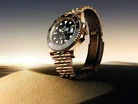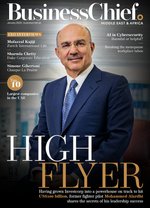Why now is the time to invest in pre-owned watches

It is almost 250 years since Scottish economist and philosopher Adam Smith popularised the theory of market supply and demand.
The world has changed beyond recognition in that time, yet his principle still holds true. However, jolts and disruptions like COVID-19 create quirks, while also proving Smith’s theory.
During the pandemic, nearly new, used cars were changing hands for as much as, or even more than, the list price of brand new vehicles – fuelled by a lack of supply and long waiting lists caused by supply chain disruptions.
Even more stark was the impact on high-end watches, with the most in-demand timepieces commanding prices up to three times the recommended retail price as collectors and enthusiasts clamoured to get their wrists around new models but unable to visit boutiques.
Already in limited supply, the second-hand market for haute horlogerie has calmed down since that heady pandemic period but many watches are still trading above asking price.
Nitin Nair, Watch Specialist at Christie’s Middle East says they have witnessed a 212% growth in the sale results from watch auctions between 2017 and 2022.
“Dubai has increasingly become a hub for watches within the secondary market,” says Nair, “and we have been able to work with collectors across the region, helping them buy and sell at our auctions and increasingly via private sales.”
It’s not just watch enthusiasts and collectors who have taken note of the pre-owned timepiece market – savvy investors have spotted the market’s performance and are also getting involved.
As BCG’s recent report ‘Luxury Preowned Watches, Your Time Has Come‘ states, from August 2018 to January 2023 average prices in the second-hand market for top models from Rolex, Patek Philippe, and Audemars Piguet rose at an annual rate of 20%. This compares with an annual rate of 8% for the S&P 500 index.
According to Pierre Dupreelle, BCG’s Global Leader for Consumer Behaviour, investor attention has concentrated on a handful of models – Patek Philippe Nautilus, Audemars Piguet Royal Oak, and Rolex Daytona and GMT-Master II – following strong growth in online consumer conversations.
“On the second-hand market, these models typically fetch up to 200% of firsthand market prices,” Dupreelle points out. “Individual Rolex Cosmography Daytona watches, with a retail price of US$14,800, were selling recently on pre-owned watch exchanges for US$24,250 to US$38,500.”
“Several independent brands and models, especially those seen as high value, unique, or hard to find, are performing strongly, too, including F.P.Journe, De Bethune, and H. Moser & Cie.”
Watches have a recognised history of performing well compared to stocks, and have also shown greater resilience than many financial and consumer product categories.
No wonder, then, that pre-owned sales reached US$22 billion in 2021, accounting for almost 30% of total sales in the luxury watch market.
A big part in that shift is pure demand outstripping supply, and the increasing demand for instant gratification. This is something that Rustin Yasavolian, CEO of Masina Diamonds has experienced first-hand.
“Luxury watches have exploded in value since 2020,” he tells Business Chief. “It is almost impossible to get a luxury sports watch like Rolex, Audemars Piguet, and Patek Philippe without an extensive purchase history.
“If you're looking to get a sports model, these authorised dealers say they will put you on a ‘list’ and keep you updated when the watch model comes in hand. The problem with this is that there are a lot of people looking for the same watch and the most highly sought-after watches are prioritised to previous clients before new ones. We've had customers tell us they've been waiting three years for a Rolex Submariner.”
Yasavolian says this is where the secondary market really comes into its own, as people simply don’t want to wait years for a watch they may never get.
He cites the example of a stainless steel Rolex Daytona 116500 that Rolex sells at a retail price of US$15,100 but currently goes for more than US$30,000 on the secondary market.
In February 2022, he says the secondary watch market prices peaked with the stainless steel Rolex Daytona trading at more than US$50,000.
Nair also mentions Rolex and Patek Philippe as the two top brands most in demand, adding that grand complications and vintage perpetual calendar references from Patek Philippe continue to be highly sought-after.
In 2022, pre-owned sales reached US$27 billion, and Swiss firm LuxeConsult says that by 2033, pre-owned sales will surpass sales of new watches, peaking at US$85 billion.
Part of the attraction for investors rather than enthusiasts is that luxury watches are seen as a stable asset built on reputable brands, and with demand from high net worth individuals who are less affected by financial downturns.
In the decade from 2013 to 2022, watches outperformed other popular collectible investments – such as jewellery, handbags, wine, art – growing at an average annual rate of 7%.
So should these in-demand watches be seen as a credible alternative investment for the speculator as well as the specialist?
“Our collectors are led by their passion firstly,” says Nair. “Clients tend to collect pieces because they have an interest in the subject – in this instance, horology). We curate collections for clients and as part of that process, we advise them on what to buy and sell depending on their tastes and where we see the market headed. Clients see a return on investment if they have been advised right or have followed their gut feel.”
Although the market has cooled, there are still sound investments to be made, and while not everyone will have the “gut feel” that Nair mentions, there are some simple guidelines that can steer potential buyers, and collectors, in the right direction.
“Every client’s collecting journey is different,” says Nair. “In general, they are all looking for collectible timepieces that will stand the test of time – watches that represent the finest watchmaking skills as well as being in the best condition possible (especially if it’s a vintage timepiece). Some clients are also attracted to watches with provenance – timepieces that belonged to celebrities or historical figures such as Andy Warhol, Steve McQueen, King Farouk, etc.”
Interestingly, BCG’s report also highlights Gen Z and younger millennial buyers who say they intend to spend more on luxury watches.
In BCG’s survey, 54% of those buyers said that they had increased their spending on luxury watches during the previous 24 months, citing increased ease of buying and selling and more investment opportunities as their top reasons. Half said they expect to spend more on luxury watches in the next 24 months despite economic uncertainties.
That is certainly happening in the Middle East, according to Nair, who says Christie’s is seeing an increase in millennial collectors and those in their 20s seeking rare vintage watches – an encouraging sign of the watch market continuing to evolve in the region.
With such high demand, you could think that these prized watches should be selling for higher prices directly from the manufacturers. Certainly a few years ago, the secondary market was largely shunned by some of the more luxurious brands, but that has changed.
In 2018, Swiss luxury goods company Richemont purchased Watchfinder – a second-hand watch seller with a strong online presence. Audemars Piguet has launched a pre-owned watch business, and Rolex finally embraced the reseller market in 2022.
With the secondhand market continuing to grow and investors diversifying their portfolios, not to mention the personal pleasure a watch can bring, it looks like this is time for preloved watches to shine.
- Top 10 biggest sovereign wealth funds in the Arabian GulfCorporate Finance
- COP28 Talks: Averda chief sustainability officer Samer KamalSustainability
- EY MENA hits 100-year milestone amid record-breaking resultsCorporate Finance
- How UAE Astra Tech is building the MENA region’s Ultra AppCorporate Finance
Featured Articles
SAP has announced it has appointed a new President for a newly-created EMEA region, aiming to make the most of the opportunities of cloud and AI
technology
From fighter pilot to fashion house financier, Mohammed Alardhi has taken Investcorp to great heights – so what’s the secret to his success?
Dr Omar Al-Attas, Head of Environmental Protection and Regeneration at Red Sea Global, shares his COP28 hopes and approach to regenerative tourism
strategy

